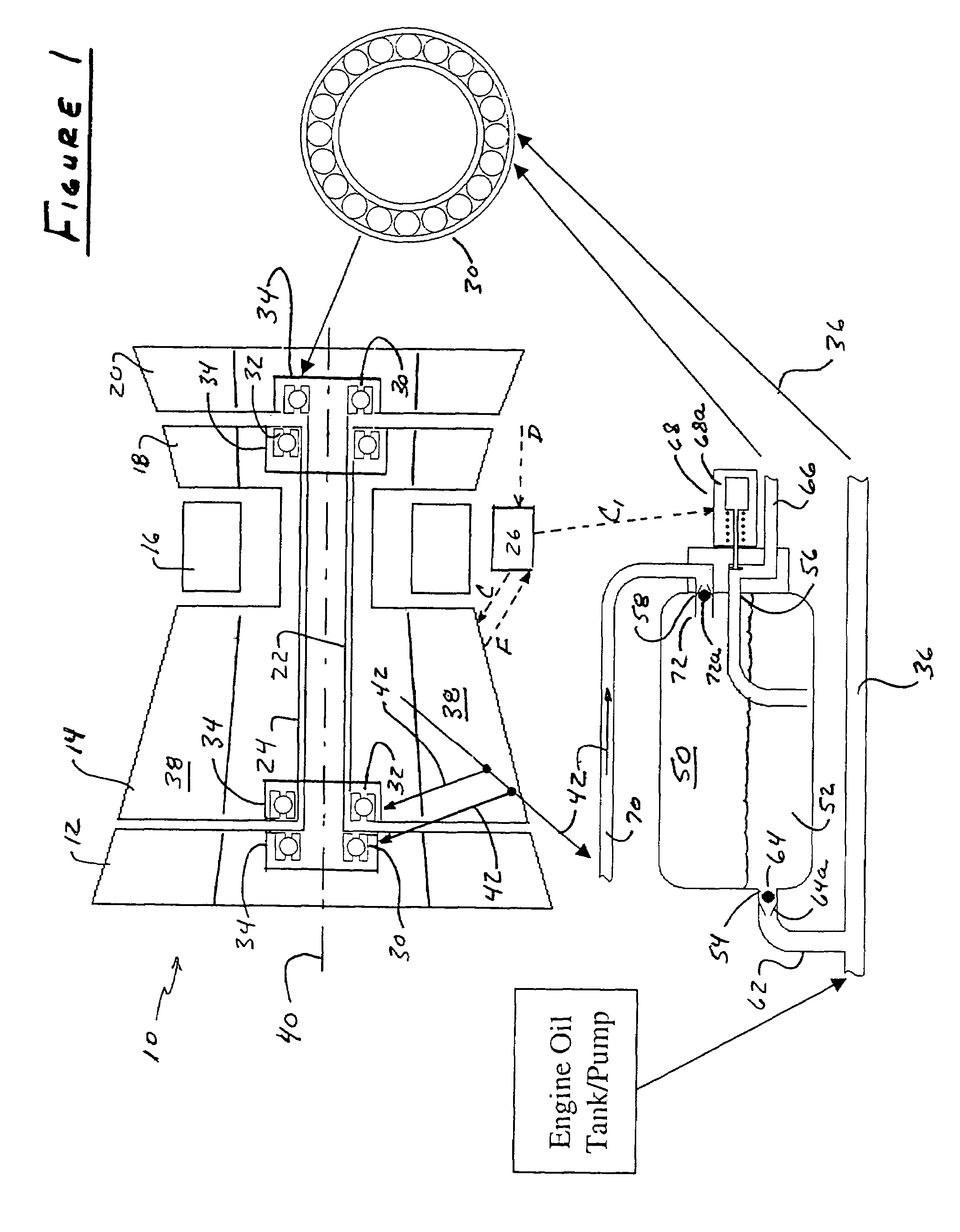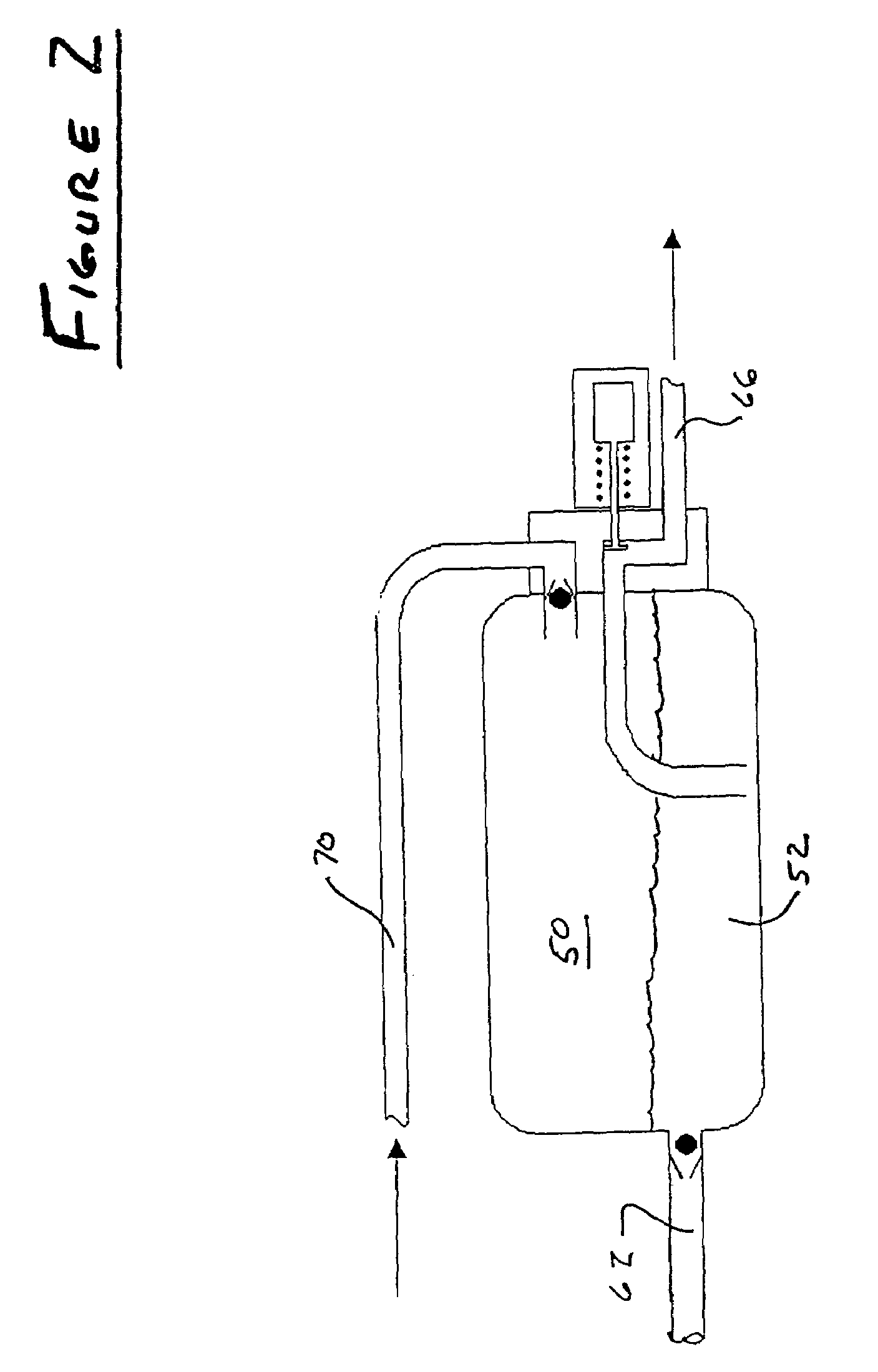Emergency lubrication system
a lubrication system and emergency technology, applied in the direction of pressure lubrication, machines/engines, mechanical equipment, etc., can solve the problems of affecting the service life of the engine, so as to prolong the time interval and lighten the weight
- Summary
- Abstract
- Description
- Claims
- Application Information
AI Technical Summary
Benefits of technology
Problems solved by technology
Method used
Image
Examples
Embodiment Construction
[0016]Referring to FIG. 1, an aircraft gas turbine engine 10 includes low pressure and high pressure compressors 12, 14, a combustor 16, and high pressure and low pressure turbines 18, 20. A low speed shaft 22 couples the low pressure compressor to the low pressure turbine. A high speed shaft 24 couples the high pressure compressor to the high pressure turbine. An engine controller 26 issues control signals C to various engine valves and actuators in response to demand signals D from the aircraft pilot and feedback signals F from the engine.
[0017]Bearings 30 support the low speed shaft from the nonrotatable engine structure. Intershaft bearings 32 support the high speed shaft from the low speed shaft. The bearings are enclosed in bearing compartments 34. A lubrication system, which typically includes an oil tank, pump, filters and deaerators, supplies a lubricant to the bearing compartments, and thus to the bearings, by way of a main lubricant flowpath, which is schematically repres...
PUM
 Login to View More
Login to View More Abstract
Description
Claims
Application Information
 Login to View More
Login to View More - R&D
- Intellectual Property
- Life Sciences
- Materials
- Tech Scout
- Unparalleled Data Quality
- Higher Quality Content
- 60% Fewer Hallucinations
Browse by: Latest US Patents, China's latest patents, Technical Efficacy Thesaurus, Application Domain, Technology Topic, Popular Technical Reports.
© 2025 PatSnap. All rights reserved.Legal|Privacy policy|Modern Slavery Act Transparency Statement|Sitemap|About US| Contact US: help@patsnap.com



